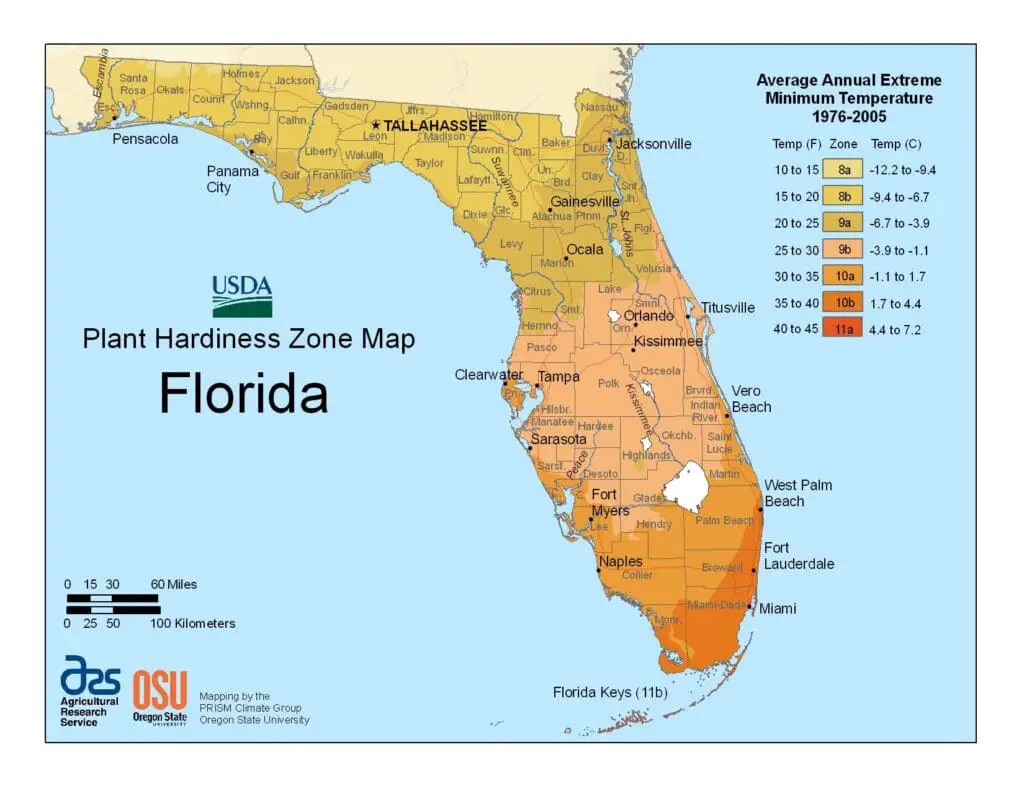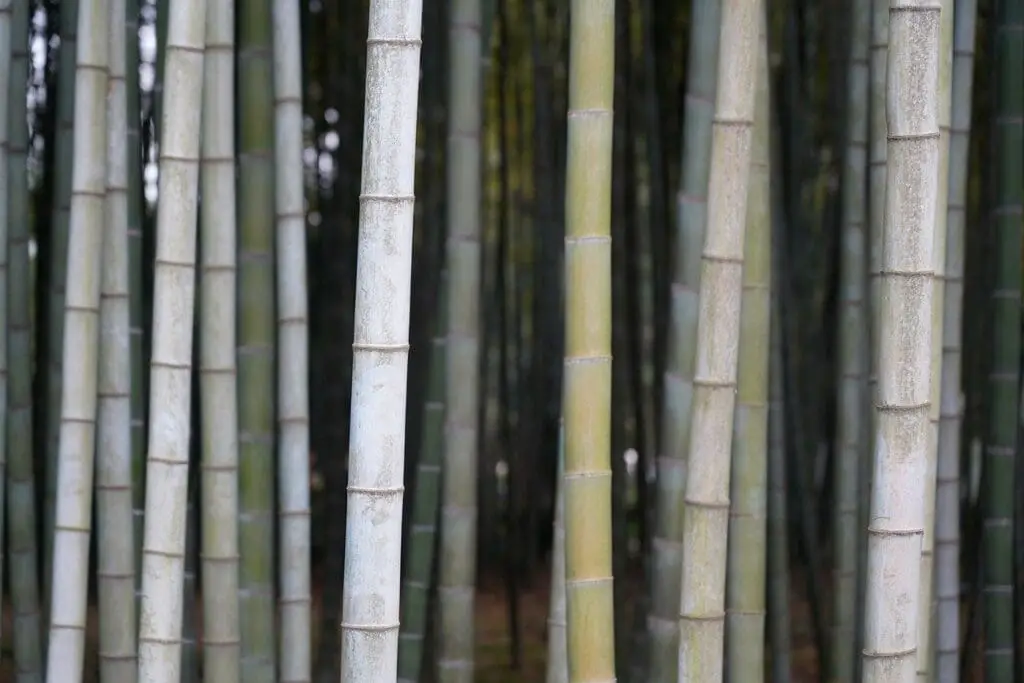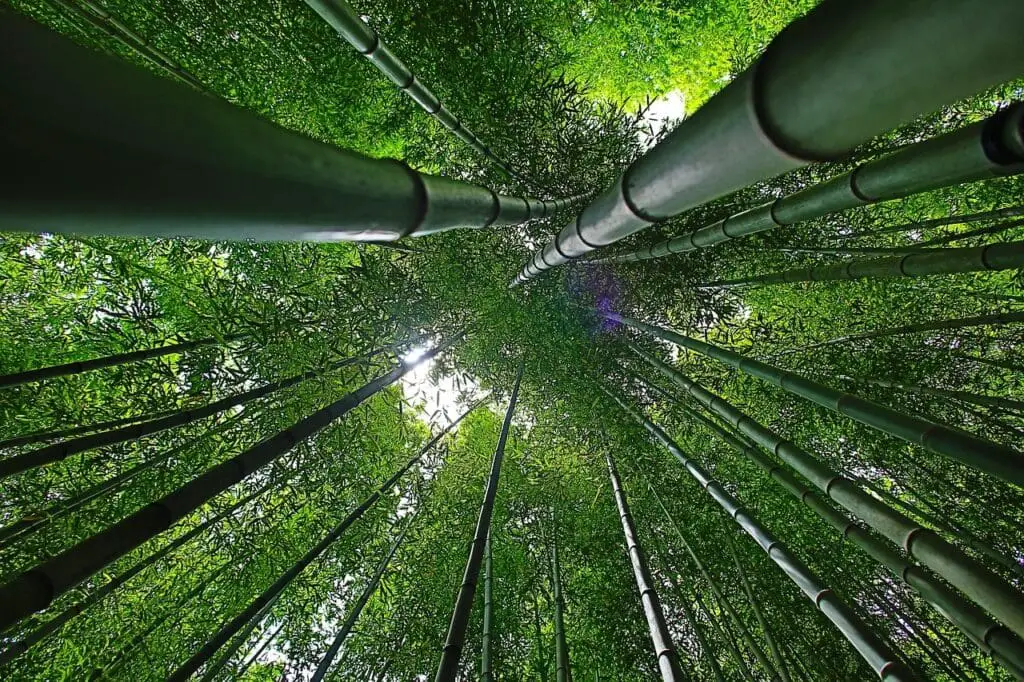Does Bamboo Grow In Florida?
Bamboo has been widely used for landscaping purposes in Florida. With various species that can thrive in different regions of the state, bamboo offers an attractive and practical option for residents.
It is crucial to select the appropriate bamboo species to control its growth effectively since running bamboo can become problematic when it spreads uncontrollably. Clumping bamboo species are generally recommended as they grow tightly together, minimizing aggressive spreading.
Key Takeaways
-
Bamboo is legal to grow in Florida and there are no specific regulations on bamboo.
-
The best bamboo for Florida depends on the USDA plant hardiness zone.
-
Weavers bamboo and Seabreeze bamboo are recommended for Florida landscapes as they are non-invasive and easy to grow.
-
Clumping bamboo species are recommended for yards in Florida, as they grow tightly together and are less likely to spread aggressively.
What is Bamboo?
Bamboo is a plant that thrives in Florida and the Deep South due to the region’s warm climate and ideal growing conditions.
Bamboo is not only valued for its aesthetic appeal but also for its numerous benefits. It is a sustainable material that grows quickly and requires minimal water, making it an environmentally friendly choice.
Best Bamboo for Florida
The selection of the most suitable bamboo species for landscaping in Florida depends on factors such as USDA plant hardiness zones and desired characteristics such as growth rate, height, and tolerance to specific conditions.
When choosing bamboo for a Florida landscape, consider the following options:
-
Weavers Bamboo: This variety is recommended for Zones 7-9 in Florida. It is deer-resistant, provides privacy, and can be used for bamboo flooring, furniture, fencing, or as an ornamental plant.
-
Seabreeze Bamboo: Ideal for Zones 9a-11 in southern Florida. This salt-tolerant species grows up to 40 feet in height and is wind, flood, and drought-resistant.
-
Bissetii Bamboo: Although it requires care and maintenance compared to other varieties, Bissetii bamboo can be used for privacy screens and hedges in Florida landscapes.
-
Other non-invasive clumping varieties: These species are preferred for yards in Florida due to their tightly growing habits that prevent aggressive spreading.
With these options available, you can choose the best bamboo species that suits your needs while enhancing the aesthetics of your Florida landscape.
Native Bamboo Species in Florida
Native to the region from Maryland south to Florida and west to the southern Ohio Valley and Texas, Arundinaria is the only bamboo genus native to North America and includes three species found in Florida. These native bamboo species have been an integral part of the ecosystem for centuries.
While they may not be as widely cultivated as other non-native bamboo species, they offer unique benefits for those interested in bamboo cultivation in Florida. Arundinaria can serve as a natural privacy screen due to its dense growth habit and tall stature. Additionally, these native bamboos can be utilized in permaculture gardens, providing habitat for wildlife and contributing to soil health.
For those seeking opportunities in bamboo farming, exploring the potential of these native species could be a promising endeavor in Florida’s agricultural landscape.
Growing Bamboo in Florida
Bamboo cultivation in Florida starts with choosing the right species that can thrive in the tropical climate and provide numerous benefits.

Bamboo is a sustainable landscaping option as it grows quickly, absorbs carbon dioxide, prevents soil erosion, and provides privacy screens or hedges. However, there are challenges to growing bamboo in a tropical climate, such as controlling its spreading nature and managing its vigorous growth.
To maintain bamboo in Florida, regular watering, mulching, and occasional thinning of culms are necessary. It is also important to regularly monitor for pests or diseases.
By following these tips for maintaining bamboo, homeowners can enjoy the beauty and functionality of this versatile plant in their Florida landscapes.
Controlling Bamboo Growth
The first step to controlling bamboo growth is to select the right bamboo species for your circumstances. Selecting clumping species rather than running species.
To effectively manage the rapid and invasive growth of bamboo in Florida landscapes, implementing strategic control measures is crucial.
One method of controlling bamboo growth is by using bamboo containment methods. These methods involve creating physical barriers to prevent the rhizomes from spreading and establishing new shoots. Bamboo root barriers can be installed around the perimeter of the bamboo grove to restrict its horizontal growth.
Regular maintenance techniques such as pruning and thinning can also help control the spread of bamboo by removing excess shoots and rhizomes.
Non-chemical methods of controlling bamboo include digging out the entire plant or mowing it regularly to weaken its growth over time.
Tropical Bamboo in Florida
Thriving in the warm and humid climate of the Deep South, tropical bamboo species offer an array of vibrant colors, large leaves, and robust growth for ornamental gardens.
In Florida, these bamboos provide numerous benefits for landscaping projects. The lush foliage and tall culms create a striking visual appeal, making tropical bamboo a popular choice for privacy screens and hedges. Additionally, tropical bamboo is a sustainable building material that can be used in various construction applications.
However, there are challenges to growing tropical bamboo in Florida. It requires a warm and wet climate with minimal temperature fluctuations, which may limit its success in certain regions of the state. Proper maintenance is crucial for ensuring healthy growth, including regular watering and fertilization.
Bamboo Growing Conditions in Florida
Bamboo in Florida requires specific growing conditions to ensure successful cultivation. Here are some important factors to consider:
-
Bamboo propagation: Bamboo can be propagated by division, rhizome cuttings, or by planting nursery-grown bamboo.
-
Bamboo care tips: Provide well-draining soil with regular watering and mulching. Prune dead or damaged canes and fertilize with a balanced fertilizer during the growing season.
-
Bamboo harvesting techniques: Harvest bamboo when it reaches its desired height and diameter. Cut at a 45-degree angle above a node to prevent water accumulation.
-
Bamboo pests and diseases: Common pests include aphids, mites, and scale insects. Diseases such as root rot and fungal infections can also affect bamboo.
-
Bamboo landscaping ideas: Use bamboo as privacy screens, hedges, or ornamental focal points in your landscape. Consider incorporating different varieties for varying heights, colors, and textures.
By following these guidelines, you can successfully grow bamboo in Florida while maintaining control over its growth and ensuring a beautiful addition to your landscape.
Popular Bamboo Species for Florida
Popular bamboo species that thrive in the Florida climate offer a range of heights, colors, and textures for a stunning addition to any landscape. These non-invasive bamboo options are perfect for privacy screens and landscaping projects. Additionally, there are cold-hardy bamboo varieties that can withstand sub-freezing temperatures in Florida’s occasional colder spells.



For those interested in bamboo farming opportunities, certain species like Bambusa and Dendrocalamus offer commercial potential due to their fast growth rate and versatility as a sustainable building material. These bamboos can also be used for permaculture gardens by providing shade, erosion control, and habitat for wildlife.
Here is a table showcasing popular bamboo species for Florida:
|
Species |
Height |
Color |
Feature |
|
Bambusa multiplex |
10-30 feet |
Green or gold |
Fine foliage |
|
Dendrocalamus asper |
40-60 feet |
Green |
Thick culms |
|
Fargesia robusta |
8-15 feet |
Dark green |
Clumping habit |
|
Guadua angustifolia |
Up to 100 ft* |
Green |
Large culms |
|
Thyrsostachys siamensis |
Up to 50 ft* |
Light green with dark stripes |
Slender culms |
(Note: * – Height may vary depending on growing conditions)
Frequently Asked Questions
Q: Does Bamboo Grow In Florida?
A: Yes, bamboo can be grown in Florida.
Q: Can I plant bamboo in Florida?
A: Yes, you can plant bamboo in Florida.
Q: What are the best bamboo varieties to grow in Florida?
A: Some of the best bamboo varieties for Florida include clumping bamboo, such as Seabreeze bamboo, Dwarf Buddha Belly, Black Asper, and Giant Timber Bamboo.
Q: Is bamboo a fast-growing plant?
A: Yes, bamboo is known for its fast growth rate.
Q: Can I plant bamboo close to my neighbor’s property?
A: It is recommended to plant bamboo at least 5 feet away from your neighbor’s property to prevent any potential encroachment issues.
Q: Is bamboo suitable for South Florida gardens?
A: Yes, bamboo is well-suited for South Florida gardens due to its salt-tolerance and ability to thrive in tropical and subtropical climates.
Q: What are the advantages of planting clumping bamboo in Florida?
A: Planting clumping bamboo in Florida offers several advantages, including its non-invasive nature, beautiful ornamental features, and the variety of dwarf and timber bamboo canes available.
Q: How far apart should I plant bamboo in my Florida garden?
A: When planting bamboo in Florida, it is recommended to space the plants at least 8-10 feet apart to allow them enough room to grow and spread without overcrowding.
Q: Can bamboo tolerate the weather conditions in Central Florida?
A: Yes, bamboo is well-suited to tolerate the weather conditions in Central Florida, including both tropical and temperate climates.
Q: Are there any restrictions on planting bamboo in Florida?
A: While there are no specific restrictions on planting bamboo in Florida, it is important to be considerate of your neighbors’ properties and ensure that the bamboo doesn’t cause any issues like encroachment or invasive growth.
Conclusion
Bamboo is a viable option for landscaping in Florida. With various species available, homeowners can choose the best bamboo for their specific USDA plant hardiness zone and their lanscaping objectives.

